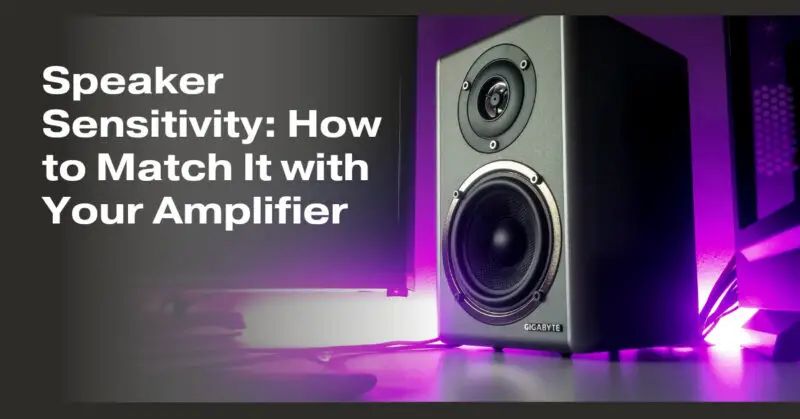Speaker sensitivity, often measured in decibels (dB), is a critical specification that plays a significant role in determining how efficiently a speaker converts electrical power from your amplifier into sound. Matching the sensitivity of your speakers with the power output of your amplifier is essential for achieving optimal audio performance. In this guide, we’ll explore speaker sensitivity and how to ensure it’s well-matched with your amplifier.
Understanding Speaker Sensitivity:
Speaker sensitivity indicates how loud a speaker can produce sound when given a certain amount of power. It’s typically measured at a distance of one meter (approximately 3.3 feet) from the speaker, using one watt of power. The sensitivity rating is expressed in decibels (dB) and represents the sound pressure level (SPL) produced.
For example, a speaker with a sensitivity rating of 90 dB means that, when provided with one watt of power, it will produce a sound level of 90 dB at a distance of one meter.
Matching Speaker Sensitivity and Amplifier Power:
- Calculate Your Speaker’s Sound Output: Determine the sound level you desire for your listening environment. Consider factors like room size, listening distance, and the volume level you typically enjoy.
- Check Amplifier Power Output: Look at your amplifier’s power output rating, often expressed in watts per channel. Ensure that the amplifier can provide enough power to reach your desired sound levels.
- Calculate the Required Power: To calculate the required power, use the following formula:
Required Power (in watts) = Desired Sound Level (in dB) – Speaker Sensitivity (in dB) + Room Gain (if applicable)
- The “Desired Sound Level” is the volume level you want to achieve.
- The “Room Gain” takes into account the acoustic characteristics of your listening room, which can affect sound levels.
- Choose Matching Speakers: Select speakers with sensitivity ratings that closely match the required power calculated in step 3. Keep in mind that a higher sensitivity speaker will require less power from the amplifier to achieve the same sound level.
- Bi-amping or Using Efficient Speakers: If your amplifier isn’t powerful enough to drive less sensitive speakers to your desired volume levels, consider bi-amping (using multiple amplifier channels) or choosing speakers with higher sensitivity.
Additional Tips:
- Pay attention to impedance matching as well. Ensure that your speakers’ nominal impedance (measured in ohms) is compatible with your amplifier’s minimum rated impedance.
- Be cautious about underpowering or overpowering your speakers. Underpowered speakers may distort or be damaged when pushed to high volumes, while overpowering can lead to overheating and damage to both the amplifier and speakers.
- Consider room acoustics and the listening environment. Factors like room size, furnishings, and acoustic treatments can impact sound levels and the perceived loudness of your speakers.
- Use caution when comparing sensitivity ratings from different manufacturers, as measurement methods can vary. Listening tests and expert reviews can provide valuable insights into how speakers perform in real-world scenarios.
By carefully matching speaker sensitivity with your amplifier’s power output and considering your listening environment, you can ensure that your audio system delivers the desired sound levels and an optimal listening experience.

